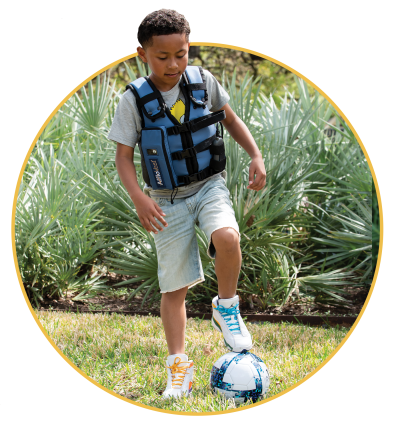Cystic Fibrosis and Benefits of Exercise
Read More
Cystic fibrosis is a common genetic disease within the Caucasian population in the United States. The disease occurs in 1 in 2,500 to 3,500 Caucasian newborns. Cystic fibrosis is less common in other ethnic groups, affecting about 1 in 17,000 African Americans and 1 in 31,000 Asian Americans.¹
The Cystic Fibrosis Foundation Patient Registry’s 2014 Annual Data Report shows growth of cystic fibrosis among minority populations.²
The Latino population accounts for only 8% of the cystic fibrosis population but accounts for a 2.8 times higher mortality rate.³’⁴ The African American population with cystic fibrosis typically have lower lung function compared to their Caucasian population counterparts.³
Minorities have a higher probability of underdiagnosis or misdiagnosis for cystic fibrosis. The notion that cystic fibrosis is only a disease in Caucasian children has lingered.⁵ This belief might dismiss the typical cystic fibrosis symptoms within the minority populations. Underdiagnosis in the non-Caucasian population can lead to difficulty in determining impact on cystic fibrosis in these populations.⁶

The standard in the United States is that all newborns are screened for cystic fibrosis by testing a small blood sample. This can indicate that a baby might have a health condition and require further investigation. Seventy-five percent of people with cystic fibrosis are diagnosed by the age of 2 years, but one study suggests that patients diagnosed after 6 weeks of age had double the risk of developing severe pulmonary disease as they aged.⁷
There are over 1,700 known mutations of the cystic fibrosis gene and as a result, most genetic tests for the condition only screen for the most common mutations. A 2001 study genotyped African Americans with cystic fibrosis and found the standard mutation panel would have missed diagnosis for 1 in every 7 subjects. The genotype study showed that one of the most common allele mutations, regardless of race, is predicted to only account for 48% of the African American allele mutations.⁸

In the clinical setting, it is important not to exclude cystic fibrosis as a diagnosis based on race.⁵ Focusing health care on smaller subpopulations is difficult. It can take additional time and resources to properly diagnosis and treat these populations because they may not fit the standard procedures, but this needs to be addressed. Data shows that minority populations with cystic fibrosis suffer a greater burden from their disease and receive lower-quality healthcare.⁹ These populations are sicker, and they need more timely help.
It is important to try to reach these minorities because it may help understand why cystic fibrosis affects these populations more severely compared to the Caucasian population. As with all medical treatments and therapies, one therapy does not affect everyone exactly the same, so with more differing representation more breakthroughs might be found to help all those with cystic fibrosis. By excluding or ignoring minorities, intentionally of not, there is a potential for losing important information about determinants of drug responses, factors contributing to clinical manifestations of cystic fibrosis and possible health disparities for minorities.³
One available treatment option for people with cystic fibrosis is airway clearance therapy. This therapy is typically performed daily, sometimes several times a day to help keep the person’s lungs clear. This can be done through techniques such as active cycle of breathing, manual chest physiotherapy (CPT), a high frequency chest wall oscillation (HFCWO) therapy vest, or a PEP device. These methods use percussion, vibration, and drainage to help loosen and mobilize mucus in the airways, allowing it to be coughed up.
HFCWO vest therapy is a cornerstone technique in managing cystic fibrosis. The AffloVest® is the first fully mobile and portable HFCWO vest that facilitates airway clearance by incorporating eight oscillating motors to create eight individual pressure waves that target the lobes of the lungs, much like manual CPT – in order to help effectively loosen, thin and mobilize mucus.
References:
1. Your Guide to Understanding Genetic Conditions: Cystic Fibrosis. Genetics Home Reference. U.S. National Library of Medicine. USA.gov. August 2020.
2. Cystic Fibrosis Foundation Patient Registry. 2014 Annual Data Report. Cystic Fibrosis Foundation. 2015.
3. McGarry, M. et al. Minorities Are Underrepresented in Clinical Trials of Pharmaceutical Agents for Cystic Fibrosis. Annals of American Thoracic Society. 2016; 13(10): 1721–1725.
4. Rho, J. et al. Disparities in Mortality of Hispanic Patients with Cystic Fibrosis in the United States. A National and Regional Cohort Study. Am J of Respir and Critical Care Med. 2018; 198(8).
5. Stewart, C. et al. Cystic Fibrosis in African Diaspora. Annals of American Thoracic Society. 2017; 14(1).
6. Zakhary, S. et al. Adult Onset in African Americans. Radiology Case Report. 2011; 6(3): 500.
7. World Health Organization. The Molecular Genetic Epidemiology of Cystic Fibrosis. Chronic Diseases and Health Promotion WHO Meeting; Geneva, 2002.
8. Heim, R. et al. Improved Detection of Cystic Fibrosis Mutations in the Heterogeneous U.S. Population Using an Expanded, Pan-Ethnic Mutation Panel. Genetics in Medicine. 2001; 3(3):168–176.
9. Smedley, B. et al. Unequal Treatment: Confronting Racial and Ethnic Disparities in Health Care. Institute of Medicine of the National Academies. 2013.
Call us at 1.833.3TACTILE (1-833-382-2845)